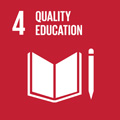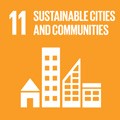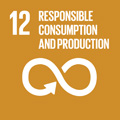- Docente: Ines Tolic
- Credits: 12
- SSD: ICAR/18
- Language: Italian
- Teaching Mode: In-person learning (entirely or partially)
- Campus: Rimini
- Corso: First cycle degree programme (L) in Fashion Cultures and Practices (cod. 9064)
-
from Sep 25, 2024 to Dec 05, 2024
Learning outcomes
At the end of the course students are able to identify all the key issues of both production and realization processes; have understood the deep relationship between objects, spaces and lifestyles; are able to describe historically and evaluate critically the most important artifacts of the contemporary age.
Course contents
The main objective of this course is to provide students with basic knowledge about the history of architecture and design from the second half of the 19th century up to today. Each lecture will be dedicated to a different subject, following a chronological order, and will address designers, works, events or themes of particular importance to the history of the two disciplines.
In addition to historical knowledge, the course will provide students with tools to understand the meanings intrinsic in architectural culture, investigating the relationship between society and contemporary cultural production. Overall, the course is a sampling of lifestyles, design tendencies and spatial models, which allow us to trace how tastes have changed over the last centuries.
Students with SLD or temporary or permanent disabilities. It is suggested that they get in touch as soon as possible with the relevant University office (https://site.unibo.it/studenti-con-disabilita-e-dsa/en ) and with the lecturer in order to seek together the most effective strategies for following the lessons and/or preparing for the examination.
Readings/Bibliography
M. Vitta, Il progetto della bellezza. Il design fra arte e tecnica dal 1851 a oggi, Einaudi, Torino 2011.
I. Tolic, Il negozio all'italiana. Spazi, architetture e città, Bruno Mondadori, Milano 2018.
Any additional and/or more detailed texts will be indicated at the end of each lesson.
The lecture slides, available on Virtual, and all the information contained therein are to be considered an integral part of the bibliography.
Teaching methods
The course consists of lectures focused on a single subject and the analysis of particularly significant case studies that, approached in chronological order, highlight moments of continuity and disruption.
Attendance of the course is not mandatory but is strongly recommended, especially for students who have not previously dealt with architecture and/or design topics.
A test has been prepared for each lesson, available on Virtual, which allows the student to check their learning.
A “self-assessment” test is scheduled halfway through the course so that students can check what they've learned to that point.
“Special lectures” are planned with experts whose personal experiences enrich the subjects taught with different points of view.
Assessment methods
The final exam will have a written, multiple-choice format. There will be 31 questions. In order to pass, students must earn at least 18 points.
Students who pass the exam can accept the grade and register it on the same day; they can refuse the grade and retake the exam at a later date; or they may ask to take an oral exam covering the same course material. In this last case, the written exam grade may be raised or lowered, depending upon the student’s preparation. Students will be notified of the date of the oral on the day of the written exam.
Concerning the optional oral exam, students able to communicate an organic vision of the topics discussed in lectures, and apply them critically, will receive excellent grades. Students who memorise course material but are unable to provide a clear synthesis and analysis of them, as well as those who employ correct but at times inappropriate language, will receive passing grades. Finally, students who have not learned the course contents or who use incorrect language (in the context of an introductory course) will not pass the exam. Gaps in knowledge, inappropriate language, and lack of familiarity with the recommended readings will all lead to failing grades.
Students with SLD or temporary or permanent disabilities. It is necessary to contact the relevant University office (https://site.unibo.it/studenti-con-disabilita-e-dsa/en ) with ample time in advance: the office will propose some adjustments, which must in any case be submitted 15 days in advance to the lecturer, who will assess the appropriateness of these in relation to the teaching objectives.
Teaching tools
Powerpoint and video. The slides we illustrate and comment on during lectures integrate the bibliography of readings with useful information and iconographic material. Students can download slides on the Virtuale platform.
Office hours
See the website of Ines Tolic
SDGs



This teaching activity contributes to the achievement of the Sustainable Development Goals of the UN 2030 Agenda.
